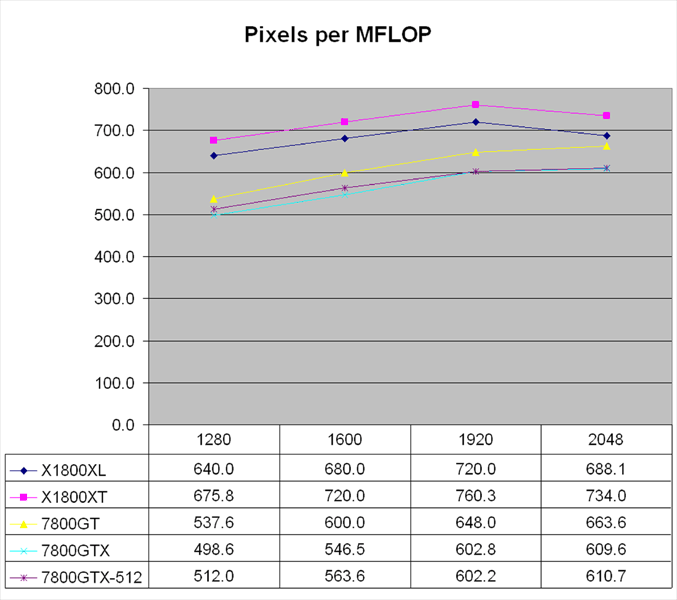ANova said:The R580 is 16 SIMD channels with 3 pixel processors each and 1.5 ALUs per processor.
So it would have more alus than a g71?
ANova said:The R580 is 16 SIMD channels with 3 pixel processors each and 1.5 ALUs per processor.
compres said:So it would have more alus than a g71?
It's very confusing in NVidia architectures.Rys said:Nope, those mini ALUs are for PS1.4 modifiers and instructions like RSQ, if memory serves. Only the main ALU pairs can issue a MUL (and NV40 can issue MUL from both, too).
Ailuros said:given the amount of instructions that can be issued by R580, the G7x would need a higher than so far predicted clock frequency (presupposition one assumes 8 quads).
_xxx_ said:...if the shader load should indeed be that high and there were no other bottlenecks
N00b said:Which games will that be? UE3 based ones? S.T.A.L.K.E.R? I doubt that we will see so many shader heavy games this year.
Extrapolating from past benchmarks and current rumors (R580 @ 700 48 Shaders 11000+ 3DM05, G71 @ 700 MHz 32PP) I don't see how the R580 will be competitive with the G71 if this year's games are comparable to last years games unless there are any other architectural improvements to R580 that we don't know about yet.
mjtdevries said:Are any of the current games shader heavy?
What about COD2 for example?
What are the bottlenecks in some of the popular games at the moment?
Ailuros said:I read in some GPGPU experiments about the claimed 83 GFLOPs for R520 and reversed the math in order to reach 16 * 4 MADDs/clk. So it's in the order of 120-something in reality?
Jaws said:VS:
vec4+scalar (all madds) -> 10 flops/ALU x 8 VS x 0.625 Ghz
~ 50 GFlops
PS:
Primary ALU:
vec3+scalar (all madds) -> 8 flops/ALU x 16 PS x 0.625 Ghz
~ 80 Gflops
Secondary ALU:
vec3+scalar (all non-madds) -> 4 flops/ALU x 16 PS x 0.625 Ghz
~ 40 Gflops
Total 1800 XT @ 625 MHz ~ 170 Gflops, 32bit programmable (peak madds, muls, adds)

If FEAR has any SM3 code in it, it's been kept awfully quiet.Pete said:Speaking of complicating analyses, does the SM2 X850 even run the same path/shaders as the other, SM3 cards?
Hard to know for sure, but Condemned apparently runs very smoothly on XB360 with 4xAA - both games are roughly the same tech - though the resolution on XB360 will be lower. I'm not sure if it's true, but supposedly Condemned defaults to soft shadowing which is a big drain on PC.If FEAR is backbuffer b/w limited, does that mean it should fly on Xenos?
The reason I did no analysis was because I wanted to make the point that comparing FLOPs across architectures is pointless.
I'm not sure if it's true, but supposedly Condemned defaults to soft shadowing which is a big drain on PC.
